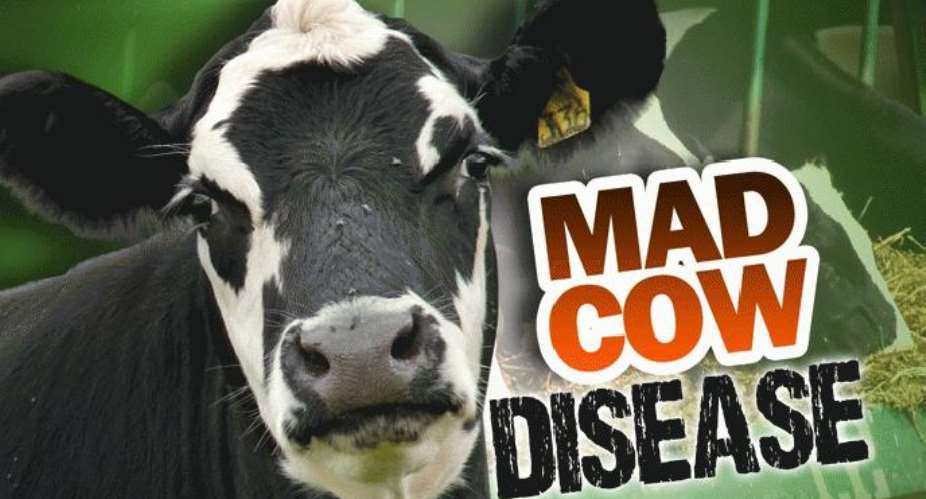Montreal, Feb. 13, (dpa/GNA) - Canadian food inspection officials confirmed on Friday that they had found a case of bovine spongiform encephalopathy (BSE), popularly known as mad cow disease, in a beef cow in Alberta.
A statement from the Canadian Food Inspection Agency (CFIA) said no part of the cow had reached the human food or animal feed systems.
"The CFIA is seeking to confirm the age of the animal, its history and how it became infected," the statement said. "The investigation will focus in on the feed supplied to this animal during the first year of its life."
The case is the first in Canada since 2011.
Canadian beef exports plumetted after the first case of BSE was found on a farm in Alberta in 2003. Canada tightened its controls and many nations have since resumed the beef trade with Canada, despite the discovery of more cases since then.
The CFIA said the latest case should not harm Canadian exports of beef.
Mad cow disease is a transmissible spongiform encephalopathy (TSE) that attacks the central nervous system of cattle. Other types of TSE include scrapie in sheep, chronic wasting disease (CWD) in deer, and Creutzfeldt-Jakob disease (CJD) in humans.
There is no treatment for the disease and no vaccine against it.
BSE is believed to be spread when cattle eat protein rendered from the brains and spines of infected cattle or sheep. Canada banned that practice in 1997.
The CFIA tightened feed rules in 2007 and said at the time the moves should help eliminate the disease nationally within a decade, although the agency said it still expected to discover the occasional new case.
Canada remains a "controlled BSE risk" country, as recognized by the World Organization for Animal Health (OIE).
The CFIA said this latest case should not affect current exports of Canadian cattle or beef, but it could delay the country's efforts to upgrade its international risk status.
According to the Canadian Agri-Food Trade Alliance, the Canadian beef industry ships to 70 countries but is reliant on the United States for 73 per cent of all meat exports. The next largest meat export markets are Mexico (9%), Hong Kong (8%), and Japan (4%).
All other markets together represent the remaining six per cent of Canadian beef exports.
GNA





 Minority will expose the beneficial owners of SML, recover funds paid to company...
Minority will expose the beneficial owners of SML, recover funds paid to company...
 Prof. Opoku-Agyemang has ‘decapitated’ the NPP’s strategies; don’t take them ser...
Prof. Opoku-Agyemang has ‘decapitated’ the NPP’s strategies; don’t take them ser...
 Abubakar Tahiru: Ghanaian environmental activist sets world record by hugging 1,...
Abubakar Tahiru: Ghanaian environmental activist sets world record by hugging 1,...
 Prof. Naana Opoku-Agyemang will serve you with dignity, courage, and integrity a...
Prof. Naana Opoku-Agyemang will serve you with dignity, courage, and integrity a...
 Rectify salary anomalies to reduce tension and possible strike action in public ...
Rectify salary anomalies to reduce tension and possible strike action in public ...
 Stop all projects and fix ‘dumsor’ — Professor Charles Marfo to Akufo-Addo
Stop all projects and fix ‘dumsor’ — Professor Charles Marfo to Akufo-Addo
 Blue and white painted schools will attract dirt shortly – Kofi Asare
Blue and white painted schools will attract dirt shortly – Kofi Asare
 I endorse cost-sharing for free SHS, we should prioritise to know who can pay - ...
I endorse cost-sharing for free SHS, we should prioritise to know who can pay - ...
 See the four arsonists who petrol-bombed Labone-based CMG
See the four arsonists who petrol-bombed Labone-based CMG
 Mahama coming back because Akufo-Addo has failed, he hasn't performed more than ...
Mahama coming back because Akufo-Addo has failed, he hasn't performed more than ...
